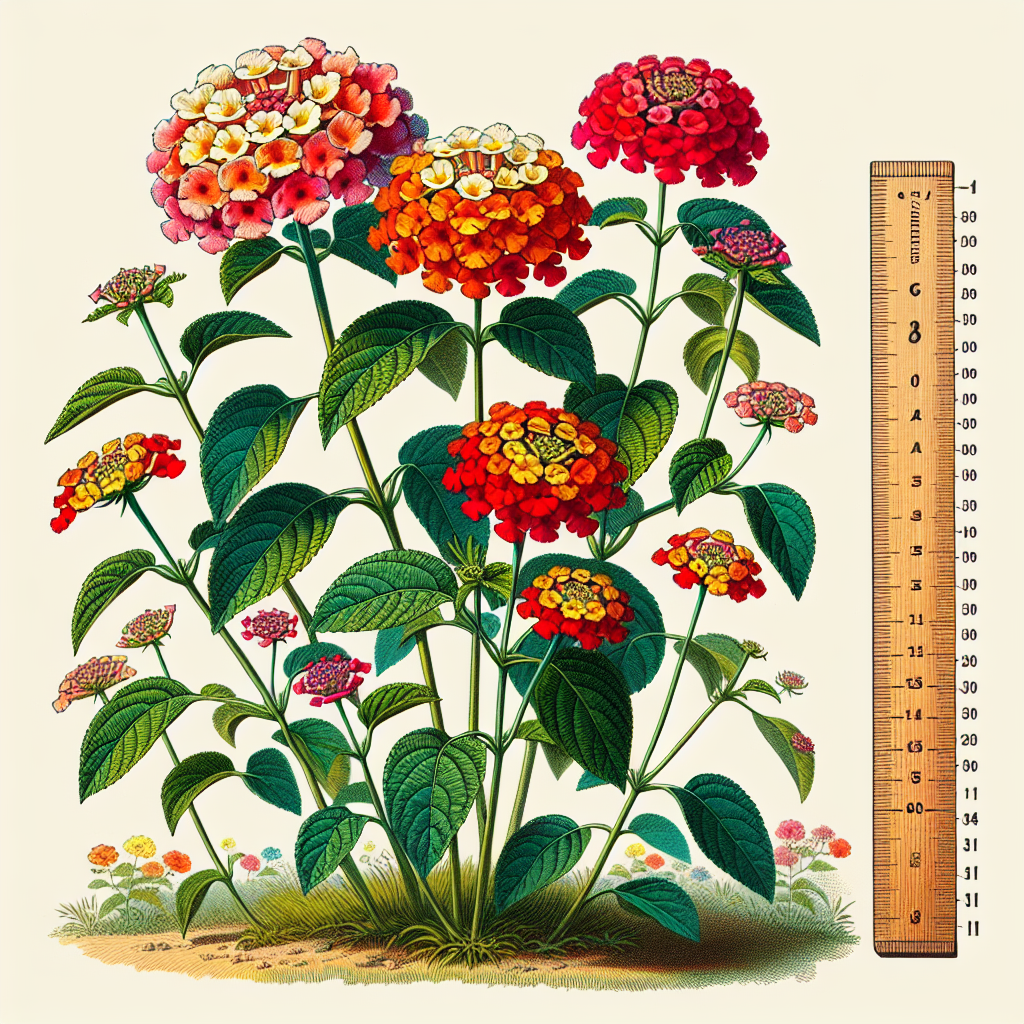
How tall does lantana grow
Understanding Lantana: A Colorful Garden Gem
Lantana is a vibrant, hardy plant that adds a splash of color to gardens and landscapes. With its clusters of small, multi-colored flowers, it attracts butterflies and pollinators, making it a favorite among gardeners. However, before planting this beauty, it’s essential to understand its growth habits, care requirements, and the environment it thrives in.
What is Lantana?
Lantana is a genus of flowering plants in the verbena family, Verbenaceae. Native to the tropical regions of the Americas and Africa, lantana is known for its resilience and ability to thrive in various conditions. There are over 150 species of lantana, and while some are classified as annuals, others are perennial, depending on the climate.
How Tall Does Lantana Grow?
When considering how to incorporate lantana into your garden, an important aspect to evaluate is its growth height. Depending on the specific species and growing conditions, lantana can reach different heights. Generally, lantana grows between 1 to 4 feet tall, but certain varieties can grow taller under optimal conditions. The size of the plant is influenced by factors such as sunlight, soil quality, and pruning practices.
- Compact Varieties: These typically grow to a height of 1 to 2 feet and are perfect for borders and smaller garden spaces.
- Standard Varieties: These can reach heights of 2 to 3 feet and are suitable for filling larger garden beds.
- Tall Varieties: Some species, particularly the trailing types, can grow up to 4 feet when trained on trellises or allowed to sprawl in the landscape.
Factors Influencing Lantana Growth
The height and overall health of lantana can be significantly influenced by several factors. Understanding these can help you cultivate and maintain a thriving plant that adds beauty to your garden.
- Sunlight: Lantana flourishes in full sun, requiring at least 6 hours of direct sunlight daily. Insufficient sunlight can result in leggy growth and fewer blooms.
- Soil Quality: Well-drained soil enriched with organic matter promotes healthy growth. Lantana is tolerant of poor soil conditions but prefers slightly acidic to neutral pH levels.
- Watering Practices: While lantana is drought-tolerant once established, consistent watering during the initial growth phase aids in achieving the desired height and fullness. Overwatering can lead to root rot.
- Pruning: Regular pruning encourages bushier growth, preventing the plant from becoming leggy and maintaining a desirable height.
Growing Lantana: Best Practices
If you're looking to grow this delightful plant in your garden, here are some best practices to follow for optimal growth and health:
- Select the Right Variety: Choose a lantana variety suitable for your climate and landscape design.
- Planting Location: Opt for a location that receives full sunlight and has well-drained soil.
- Watering: Water the plant thoroughly after planting and then less frequently as it matures.
- Fertilization: Use a balanced fertilizer during the growing season, but avoid over-fertilizing as this can lead to excessive foliage with fewer blooms.
- Pruning: Trim back the plant in early spring to promote new growth and flowering.
The Benefits of Lantana in Your Garden
Incorporating lantana into your outdoor space can offer several advantages beyond its aesthetic appeal. Here are just a few reasons to consider this stunning plant:
- Pest Resistance: Lantana is known for its resilience against various pests, making it a low-maintenance choice for gardeners.
- Pollinator Attraction: Its bright flowers attract bees, butterflies, and hummingbirds, supporting local ecosystems.
- Heat and Drought Tolerance: Lantana thrives in hot weather and is drought-resistant, making it ideal for areas with low rainfall.
- Versatile Uses: Lantana can be used as ground cover, in containers, or as a border plant, allowing for diverse landscaping options.
Common Issues When Growing Lantana
While lantana is relatively easy to grow, it is not immune to various issues that can affect its health and growth. Here are some common problems and their solutions:
- Pest Infestations: Watch for aphids, spider mites, and whiteflies. Use insecticidal soap or neem oil to treat affected plants.
- Diseases: Lantana can be susceptible to root rot, powdery mildew, and leaf spot. Ensure proper drainage and avoid overhead watering to minimize these risks.
- Leggy Growth: If your lantana looks stretched out, it may not be receiving enough sunlight. Move it to a sunnier spot if possible.
Conclusion
Growing lantana can be a rewarding experience, offering both beauty and practicality to your garden. By understanding its growth habits, including how tall lantana grows, and following appropriate care practices, you can cultivate a thriving display of color that attracts pollinators and enhances your outdoor space. Remember to choose the right variety, provide ample sunlight and water, and prune regularly for the best results. Whether planted in a container, as border plants, or in flower beds, lantana is sure to bring joy and charm to your garden.
“Gardening is a way of showing that you believe in tomorrow.” – Audrey Hepburn
Additional Resources
If you're interested in learning more about lantana and other garden plants, consider checking out the following resources:
With its resilience and stunning beauty, lantana is a plant that deserves a place in your garden. Happy gardening!
By Guest, Published on October 16th, 2024